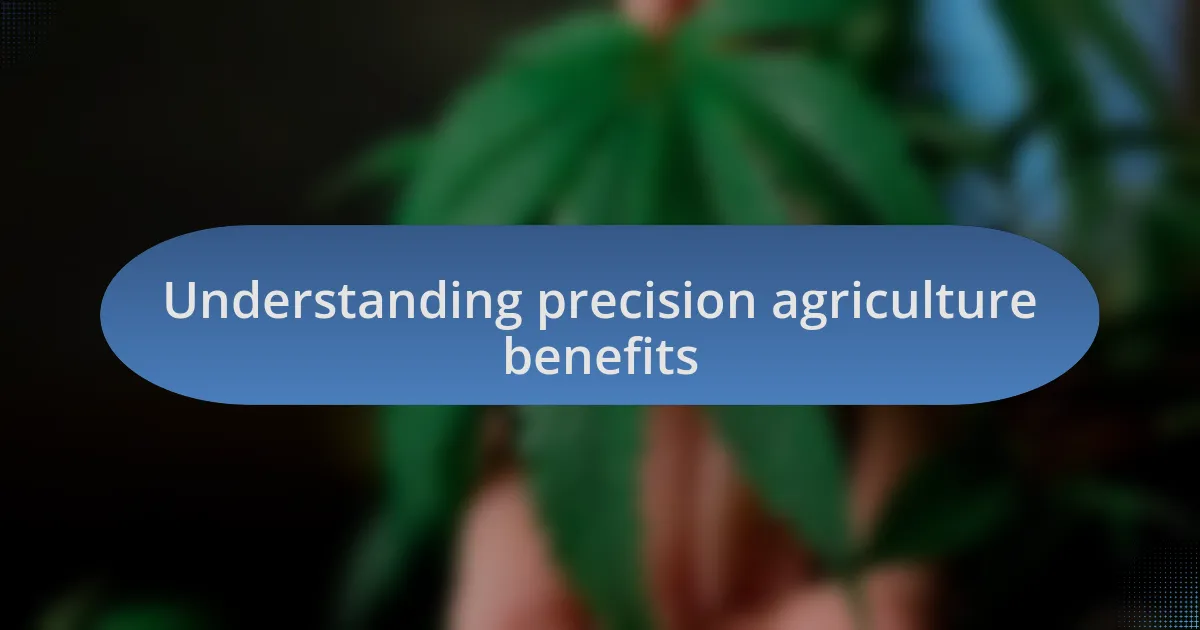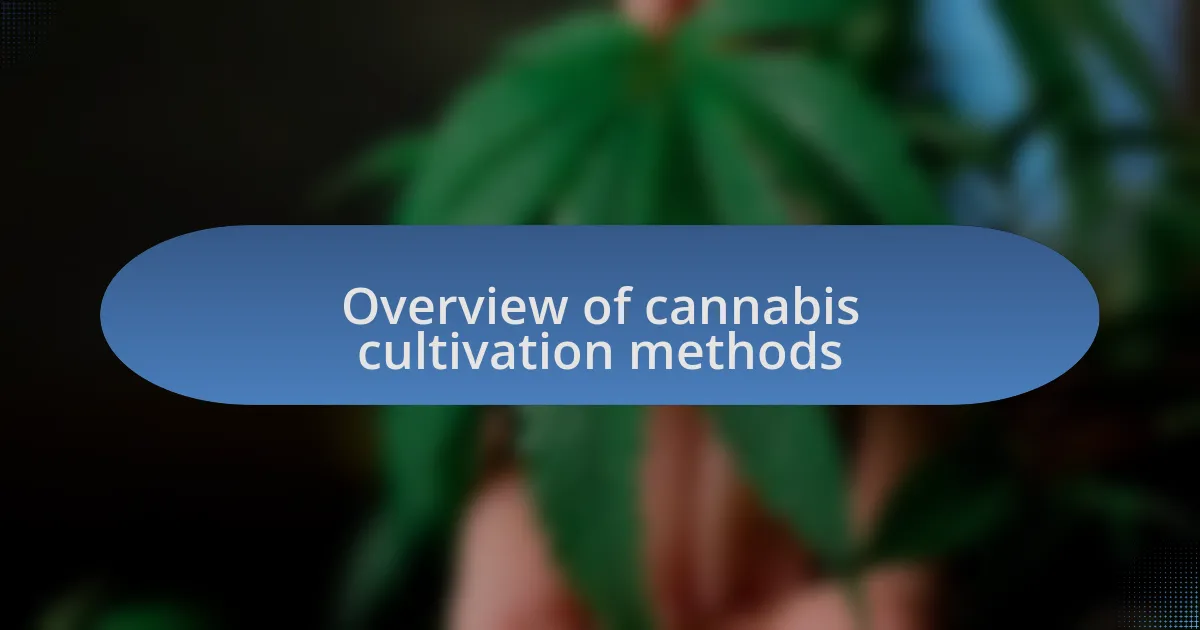Key takeaways:
- Precision agriculture technology enhances farming through tools like GPS mapping, drones, and data analytics, leading to improved crop management and sustainability.
- Farmers benefit from increased efficiency and reduced resource use by utilizing advanced technologies, such as drones for aerial surveying and soil moisture analytics.
- Cannabis cultivation methods include traditional soil farming, hydroponics, and aquaponics, each offering unique advantages for plant growth.
- Challenges in adopting technology include high initial costs, a steep learning curve, and the complexity of data management, requiring careful consideration by growers.

Introduction to precision agriculture technology
Precision agriculture technology is transforming how we approach farming with significant impact on crop management. I vividly recall my first encounter with soil sensors during a local farming workshop; they transformed my understanding of how real-time data can lead to more informed decisions. Have you ever wondered how these technologies can optimize yields and reduce waste?
This innovative approach employs tools like GPS mapping, drones, and advanced analytics to fine-tune farming practices. Reflecting on my own experiences, I realized that integrating technology allows us to not just sow seeds but to cultivate potential. Isn’t it inspiring to think how data-driven techniques can empower us to create more sustainable growing practices?
Affording farmers the ability to monitor their crops with astonishing precision can feel like wielding a superpower. I remember the excitement of witnessing firsthand how targeted irrigation systems improved our yield while conserving water. Don’t you find it exhilarating to consider how this technology can help us redefine what’s possible in agriculture?

Understanding precision agriculture benefits
Understanding precision agriculture offers a myriad of benefits that directly affect crop growth and farmer efficiency. I still remember the first time I used drone technology to survey a field; the clear aerial images opened my eyes to areas needing attention that I would have missed walking around. Have you ever considered how much time and resources could be saved by identifying problems before they escalate?
The power of data analytics cannot be overstated. After implementing a system that analyzed soil moisture levels, I witnessed a remarkable reduction in water usage while still boosting crop yields. Isn’t it fascinating to think that we have the capability to make such impactful changes with just a few strategic insights?
Moreover, these technologies foster a deeper connection between farmer and land. I feel a sense of peace knowing that precise planting techniques can lead to healthier crops and, ultimately, a more sustainable operation. How often do we get the chance to blend tradition with innovation for a brighter future in agriculture?

Overview of cannabis cultivation methods
When it comes to cannabis cultivation, there are several methods that growers can choose from. Some prefer traditional soil farming, using organic soil and nutrients to create a natural growing environment. I remember visiting a farm where the earthy aroma and vibrant green plants made it clear that this hands-on approach nurtured healthy cannabis.
On the other hand, hydroponics has gained popularity, allowing for more controlled conditions. In one experience, I was amazed at how plants thrived in a nutrient-rich water solution, free from soil constraints. This method not only maximizes space but can lead to quicker growth cycles. Have you ever tasted a hydroponically grown plant? The flavors can be incredibly rich and lively!
Lastly, there’s the emerging trend of aquaponics, which combines fish farming with plant cultivation. I was intrigued to see how the fish waste provided vital nutrients for the cannabis plants while also purifying the water in return. Isn’t it amazing how nature can create a sustainable ecosystem that benefits both plants and animals?

Challenges faced in adopting technology
Adopting precision agriculture technology in cannabis cultivation comes with its unique set of challenges. For instance, I’ve seen firsthand how reluctant some growers can be when faced with the high initial investment costs of advanced systems. It’s a tough choice: do you invest heavily and potentially see benefits down the line, or stick to tried-and-true methods with a more predictable outcome?
Another significant hurdle is the steep learning curve associated with new technologies. I remember my initial struggles when I first experimented with sensors and data analytics. It was overwhelming at times, feeling like I was pouring over tech manuals instead of connecting with my plants. Have you ever felt that frustration in learning something new? It can really slow down the entire growing operation.
Finally, there’s the issue of data management. I’ve learned that collecting data is just the beginning; interpreting and acting on that data is where the real challenge lies. I often found myself wondering if I was making decisions based on accurate insights or simply falling for a tech fad. It’s crucial to sift through the noise and focus on what truly benefits our crops, but that can be a daunting task in this age of information overload.